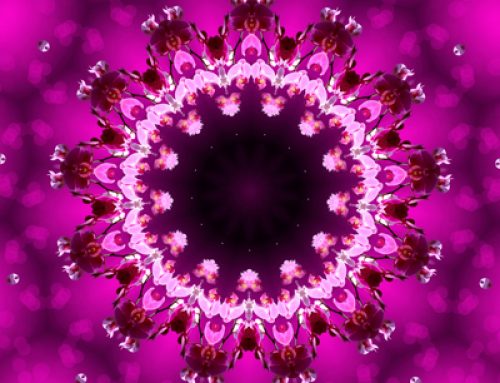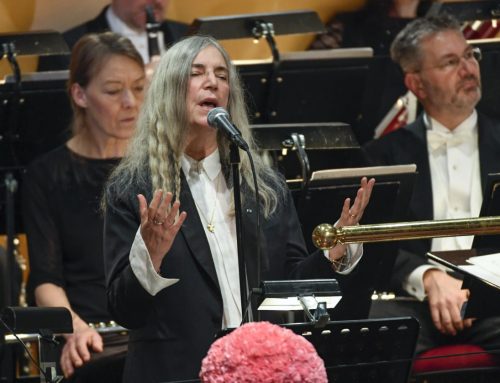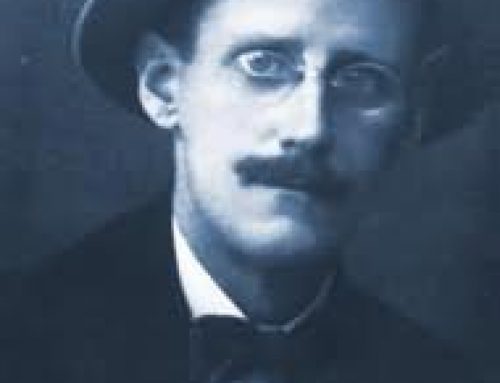from Mark Epstein on Buddhism, psychotherapy and art:
« …James Joyce talked about something similar when he described the best way to look at a work of art. He used the word « beholding, » but I think he was describing something similar to what Freud was pointing to when he suggested that we « catch the drift » of someone’s unconscious with our own. If you pull the artwork toward you, the experience becomes pornographic, Joyce said, but if you distance yourself too much, it becomes criticism. The correct approach requires some sort of middle ground, where the viewer surrenders himself to his own unconscious experience of the object. »











empathy is a key-word?
fundament of real communication?
further then projection and identification;
– empathy more fundamental than on storylevel…-
the empatic mechanism has transcental capacity…
empathy is a key-word?
fundament of real communication?
further then projection and identification;
– empathy more fundamental than on storylevel…-
the empatic mechanism has transcental capacity…
how to look at a work of art?
To be not to technical about this I can refer to Fernando Pessoa who was very clear on this in his work as Alberto Caeiro.
I don’t know the tittle of the book in french or englisch; it is ‘O guardador de rebanhos’ in portugees. Poem XXIV is verry clear:
free translation:
…
"Essential is to be able to see.
To be able to see without thinking.
To be able to see when you see.
and not thinking when you see.
Neither see when you think"
…
I feel like this is so essential…
To enter a work of art, you have to enter the abstract level ( colours, form, space, sound…)( real observation) instead of only storylevel. Awareness of abstract level through storylevel. Abstract level as fundament.
When you just enter a work of art through storylevel ( categorical), you just see the ‘picture’. You don’t enter the essense (of a Vermeer or a Morandi) in this way.
To enter the essence of a Vermeer, a Morandi, etc you have to see. As a matter of fact you have to be what I call "totaly naked"- (totaly open). Just looking.
And then it is not like ‘you’ ‘enter’ the work of art,- there is no grasping- … but the work of art is ‘entering’ you. Vermeers, Morandi’s; Bach’s, Ando’s silence is overwelming you…
out of ‘Messiah’ from Handel:
…
"Behold" your God!
Arise, shine for thy light is come,
and the glory of the Lord is risen upon thee.
(Decca; Kathleen Ferrier, contra-alto)
Thank you for ‘beholding’. Written 21 pages allready.
Not especialy on art: but on the terms distance / pulling towards us/ unconscient:
When I started meditation we learned labeling things. I felt like this was making things categorical. To me it was creating distance. In this period I allways used the word distance to. How far could you get lost? There is no distance in ‘the silent point’.
The problem of distance : leading to what I call ‘cynical relativism’. Or to what I call ‘the observation of the commercant’ in real life.: What is in there for me. Very atempting to people with little empatic abilities.
It was very clear to me that all of this had to open our heart, not make us ‘cold hearted’. I didn’t trust it.
Now I don’t use the word distance anymore. To me it is ‘the ability to differentiate extremely clear, profound and total: ‘To realy observe’.
So when Joyce said ‘ the experience becomes pornografical’, I asume he points to the lack of communication, intrest, respect towards the other part. We degrade the other to what is functional to us, looking for identification.
There is another form of absorbtion though. Entering through the abstract level. " The real observation level". Entering the other just listening, observing. Not about identification/projection. No goal. Not functional.
The problem with absorbtion: it can become one-undifferentiated-feeling- like. Very non dualistic. But a non-dualism that does not contain dualism.
I had this problem with the term middle way. For it feels like a little bit less distance – and a little bit less absorbtion. There is not such a thing as a little bit absorbtion/surrender. There is absorbtion on another level.
To me it feels more like total absorbtion/surrender (koans-training), PERVADING total clear differentiation(vipassana-training). The nondual containing the dual.
Two opposites, fusion and differentiation becoming both parts of the same coin: the silent point.
I know Lacan is Kantian ( categorical imperatif) . I don’t know about Freud or
Joyce. I did not read Freud becouse my intuition said ‘it was not in there’. (I had a few very Freudian friends) What does Freud mean with conscience – unconscience? To me the critical point seems the relationship between conciousness/ unconsciousnes and the non- categorical.
To me ‘real consciousness’ is based on the non-categorical. Containing the categorical to. Excluding nothing.
And consciousness transcending ego does’nt mean that it is unconscient????! At the contrary: it is complete total all including awareness. It is not becous it doesn’t feel like MY consciensness, that it is not consciousness ???Nevertheless it is a kind of consciousness, that ego kind of ‘remembers? ‘ afterwards? I surely should not name it unconscient… becous more awake than ever…
How do you feel about this?
And thanks for your website and your comment.
– on entering a work of art – more later ( I will reduce the 21 pages)
– on the tritych and the egg – later
Thanks for your reply.
Yes. Pulling it toward you is identifying with it, or fusion. (materialism)
Yes. Distancing becomes criticism, or separation. (nihilism)
"Middle ground" is the Buddha’s middle way, or the triangle’s apex, which is not in fact "middle" or "between," which are terms that prolong the duality of one side or another. When asked dualistic questions, the Buddha tended to "reply" with silence.
See triptych entry above.
thank you very much for this reaction.
What would Joyce mean by : " If you pull the artwork toward you?" If you search for identification/projection? If you totaly absorb into?
"But if you distance yourself to much" If you become an outside observer?
Middle ground = the middle between?